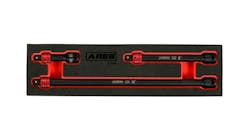New DTCs appearing after a repair is more common than you might think. The reasons why are several, but the most common are a failure to make sure all the OBDII test monitors are Ready, failure to address pending Diagnostic Trouble Codes (DTCs), and not investigating the cause of Mode $06 failed test results. Let me provide you with a few examples that will shed some light, while helping you better understand why it’s so important to perform a complete and thorough diagnostic procedure on an OBDII vehicle.
Because the engine was already hot, I knew that the EVAP monitor would not run until the vehicle cooled down, so there was no sense wasting time at this point to even try. The O2 monitor status can affect the EVAP monitor. It’s always a good idea to read up on how the system and components function and interact no matter how many times you may have worked on a particular manufacturer’s product line.
In this case, we need to know how the Engine Control Module (ECM) is running the EVAP monitor. The O2 sensors are used to check if the EVAP system is actually purging HC (hydrocarbon, or raw fuel) vapors on this vehicle. There always are checks and balances to insure the systems function as designed. The EVAP purge valve (normally closed) is commanded open by the ECM which is looking for a change in O2 voltage to make sure the EVAP system is working properly. Understanding how the system functions is a smarter and quicker way to precede.
With the O2 monitor Ready, I was able to test the system. Take a look at the DTCs that came up as a result (Figure 3). As you can see, the ECM now displayed five DTCs instead of the one that had been previous been displayed. Not only did the monitor confirm the P0101 MAF sensor DTC, it was clear that the O2 sensors were sensing failing conditions that were ultimately caused by a cheap aftermarket replacement MAF sensor.
As you are reading through this case study, you can see how very important it is to have the monitors all run to completion. It is vital to confirming your repairs and avoiding comebacks caused by codes that appear after your initial fix.
As you know from working on A/C systems, there can be numerous problems causing no cold air from the ducts. Low refrigerant, defective expansion valves or office tubes, defective compressors, leaks, contaminated refrigerant or sealant problems are just a few. Most of the time, if you have a good game plan on how to check and diagnosis the system you can stay out of trouble. The first thing to do is use a sealant detector so you can make sure that you refrigerant identifier and AC machine do not get contaminated. With that very real possibility out of the way, next check the refrigerant itself with an identifier for the same reasons.
How about A/C leaks? There are many methods for identifying system leaks with all of us familiar with the refrigerant leak detector, fluorescent dyes, ultrasound equipment and nitrogen testing. Even with these methods, finding the really small leaks is always a challenge. And considering how little modern systems hold, finding the little leaks is important to not only making sure our customers stay comfortable, but their system compressors to live a long and happy life.
Here’s a great example of a 2008 Acura RDX 2.3L Turbo I recently had with a complaint of poor cooling from the air condition system. The vehicle was brought to the dealer before coming to us because of a recall that matched the owner’s complaint. The dealer recall (12-039) is for an A/C compressor extended warranty that addresses poor cooling caused by compressor performance. The vehicle owner was told that the compressor was replaced and fluorescent dye and refrigerant were added.
After the repair, the system was performing well for about a month before it went back to blowing warm air. The vehicle was returned to the dealer and rechecked for leaks but none were located. The system was recharged and returned to the customer. After another month, the owner experienced the same problem, but this time they broughtWe recovered and evacuated the system and used the ATS BullsEye system, pressuring the A/C system with CO2. CO2 is a smaller molecule and more easily passes through small holes, making it easier to detect. Using the special leak detector that comes with the kit, we located the area of the leak in the car’s condenser (Figure 4). To confirm the small leak, we sprayed the BullsEye foam on the area where the BullysEye detector had triggered. As you can see (Figure 5), the pink foam (area of no leak) reacts with the CO2 and turns yellow, confirming the leak. A new condenser and receiver drier (one complete unit) later, and this customer’s problem was solved.






